When driving on the mountain road D22, the hilltop village of Sainte-Agnès makes a great impression. It is perched on the flank of a mountain high above the town of Menton and the Mediterranean sea. Locals claim the village is the highest coastal village in Europe. Whether this is true or not, from there, the panoramic view over the French Riviera is breathtaking. Each year, over 50,000 tourists climb to Sainte-Agnès, which holds the prestigious label “Plus Beaux Villages de France” (France’s most beautiful villages).
Watch this video about Menton to get an idea of what to see around Sainte-Agnès:
Plan your trip to Sainte-Agnès and Menton!
- 🏨 Find the best accommodations in Menton on Booking.com
- 🙋♀️ Get the PASS CÔTE D’AZUR and take your pick from more than 100 amazing experiences!
- 🌴 Read our Discovery Guide of Menton, the Pearl of France
- 🎯 Take a guided hidden gem tour of Monaco
- 🥗 Experience the culture and food of Old Nice on a 4-hour sightseeing and tasting tour
- 📚 Read the DK Eyewitness Provence and the Côte d’Azur Travel Guide
- 🤩 Get familiar with the French Riviera
![Welcome to Saint-Agnès! © Pmk58 - licence [CC BY-SA 3.0] from Wikimedia Commons](https://frenchmoments.eu/wp-content/uploads/2014/08/Saint-Agnès-©-Pmk58-licence-CC-BY-SA-3.0-from-Wikimedia-Commons.jpg)
Where is Sainte-Agnès?
Sainte-Agnès lies 11 km (7 miles) of Menton at an altitude of 800 m above sea level. The D22 village that climbs to the village from Menton is a narrow winding mountain road.

Sainte-Agnès is an attractive site due to its fantastic position which dominates Menton and Roquebrune-Cap Martin. The French motorway A8 is clearly visible crisscrossing the outback of Menton through a series of viaducts and tunnels.

You can use the village as a base for great walks in the mountains, including a two/three-hour climb to the Pic de Baudon (1,264m), where the stunning views are among the most beautiful in the region.
Views from and to the village
Here’s a view of Menton and the Mediterranean sea from Sainte-Agnès:
![The view of Menton from Sainte-Agnès © Ondřej Žváček - licence [CC BY-SA 3.0] from Wikimedia Commons](https://frenchmoments.eu/wp-content/uploads/2014/08/Panorama-of-Menton-from-Sainte-Agnes-©-Ondřej-Žváček-licence-CC-BY-SA-3.0-from-Wikimedia-Commons.jpg)

Here is Roquebrune-Cap Martin with Cape Martin to the right:
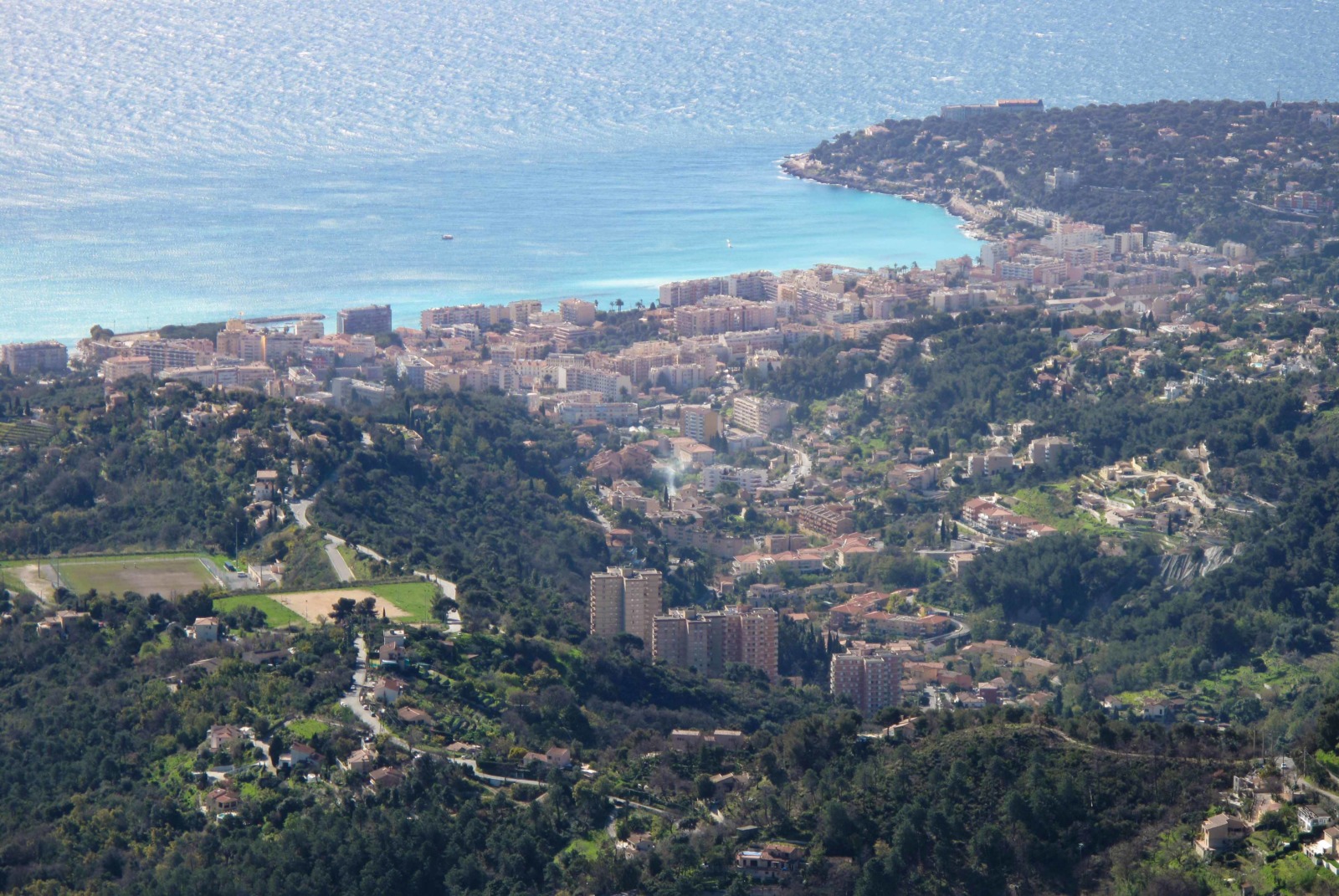
A general view of the hilltop village of Sainte-Agnès:
![General view of Sainte-Agnès © Patrick Rouzet - licence [CC BY-SA 3.0] from Wikimedia Commons](https://frenchmoments.eu/wp-content/uploads/2014/08/Sainte-Agnes-©-Patrick-Rouzet-licence-CC-BY-SA-3.0-from-Wikimedia-Commons-1.jpg)
Sainte-Agnès: A bit of History
The history of the village starts with legends…
The legends
Legend has it that Sainte-Agnès was founded by a Saracen prince named Haroun who had fallen in love with a local maid.
Another story tells of an Italian princess on a journey who would have found refuge in a village’s cave while trying to avoid a violent storm.
A coveted and strategic place
A number of local powers coveted the strategic site of Sainte-Agnès that overlooks the Mediterranean coastline:
Unlike Menton, Sainte-Agnès belonged to the County of Nice.
![Sainte-Agnès: the village and the castle © Mossot - licence [CC BY-SA 3.0] from Wikimedia Commons](https://frenchmoments.eu/wp-content/uploads/2014/08/Sainte-Agnès-1-©-Mossot-licence-CC-BY-SA-3.0-from-Wikimedia-Commons.jpg)
Alongside Nice and its county, France annexed Sainte-Agnès in 1860 following a referendum on the matter.
What to see in the Hilltop Village of Sainte-Agnès
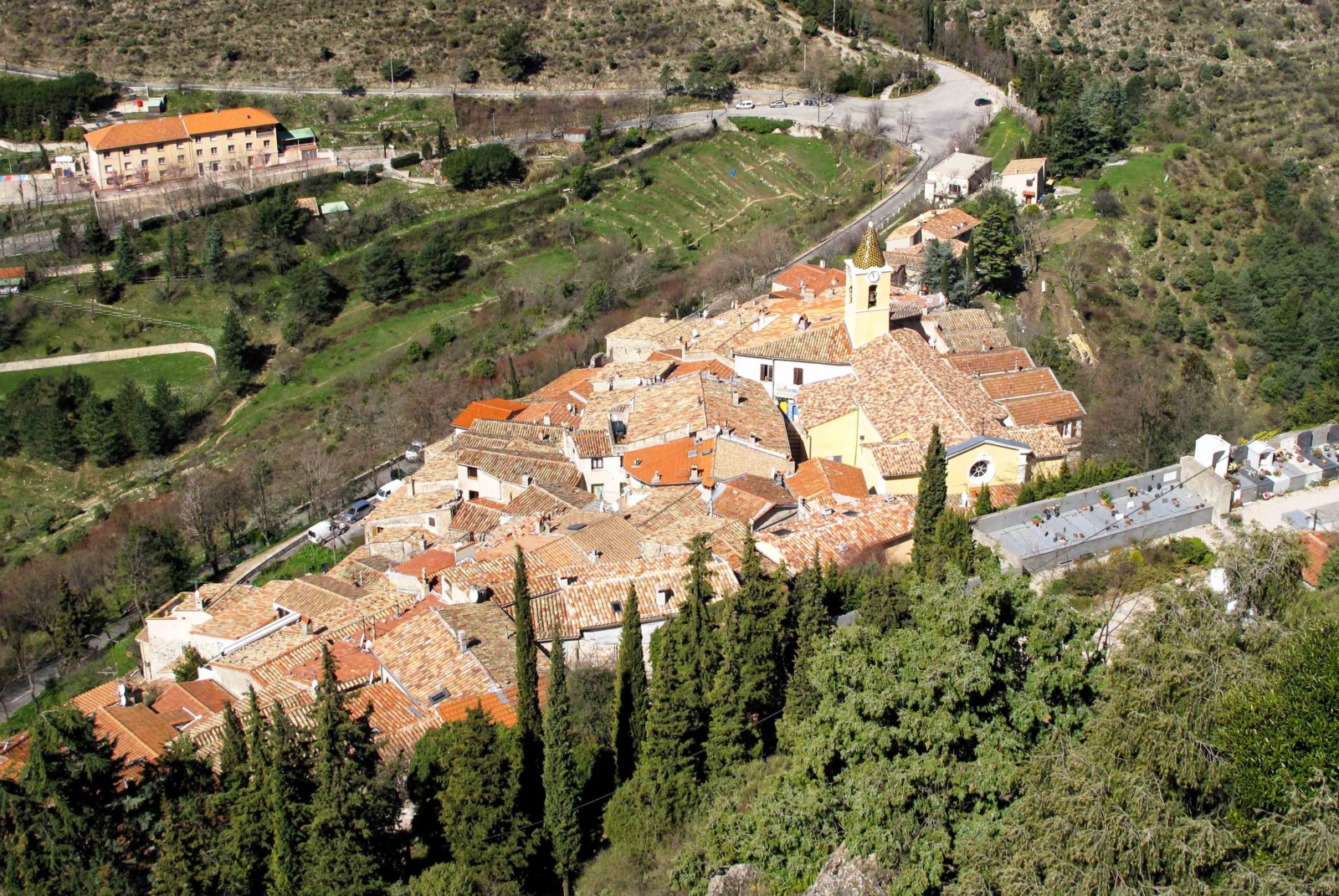
The centre of the village comprises many picturesque cobblestone streets – some with arched passages and stairs. They date back to medieval times.
On your stroll, you’ll find craftsmen stores, artists’ workshops, restaurants and cafés in well-restored houses from the 15th and 16th centuries.
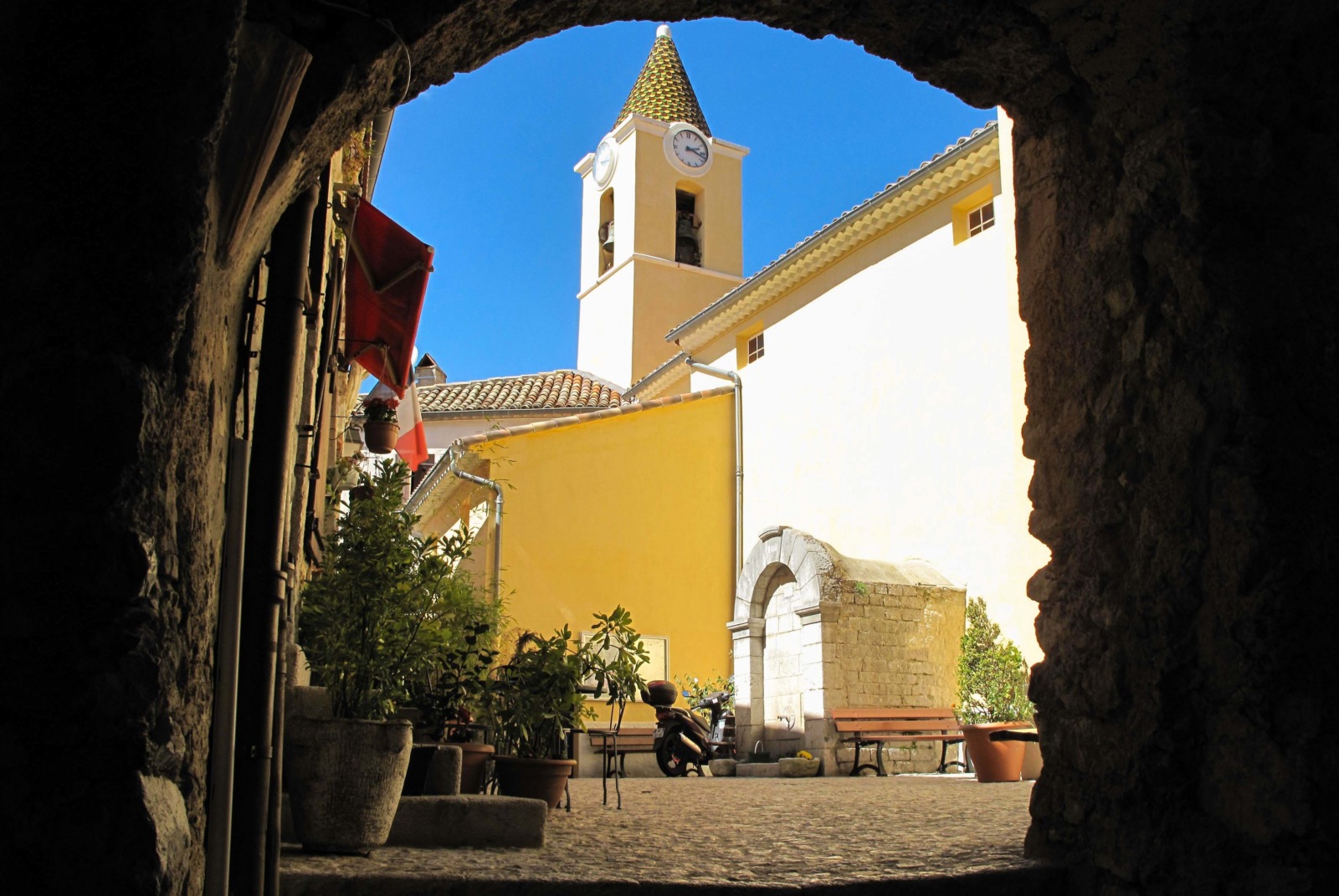
A vaulted passageway in the old village:
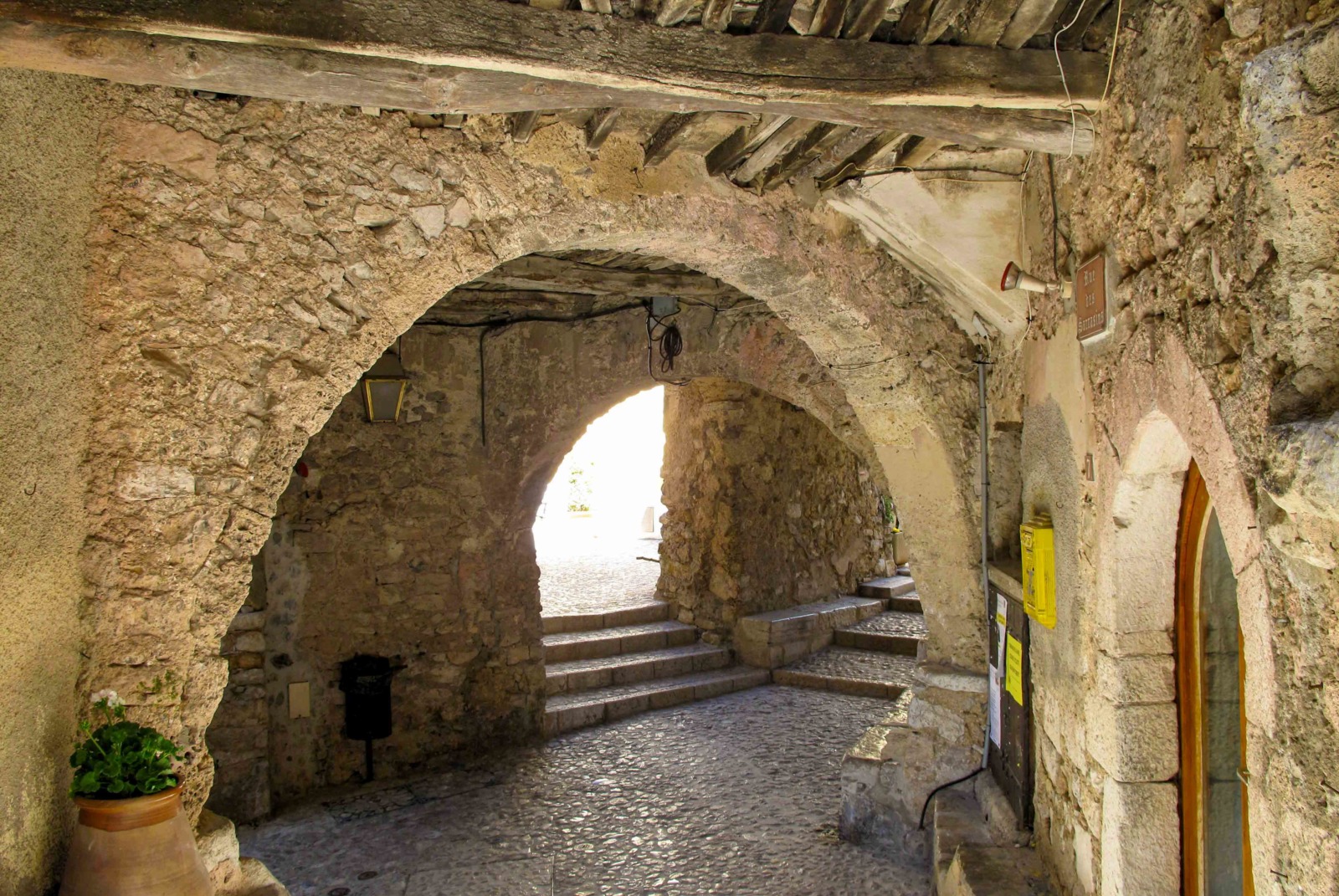
Rue des Sarrasins:
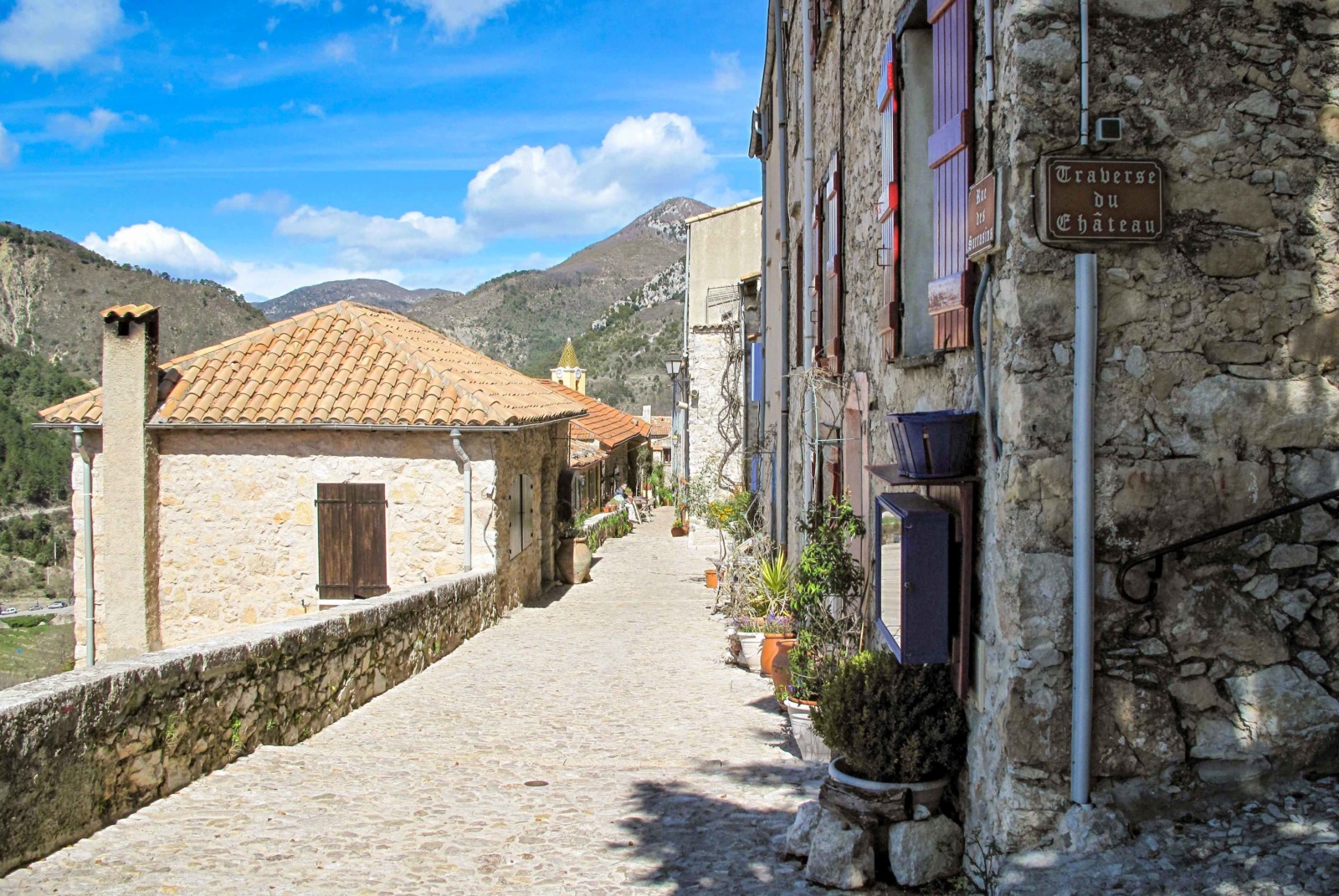
The town-hall:
![Sainte-Agnès - The Town-Hall © Berthold Werner - licence [CC BY-SA 3.0] from Wikimedia Commons](https://frenchmoments.eu/wp-content/uploads/2014/08/Sainte-Agnes-Town-Hall-©-Berthold-Werner-licence-CC-BY-SA-3.0-from-Wikimedia-Commons-1.jpg)
The church of Notre-Dame-des-Neiges
The Baroque Notre-Dame-des-Neiges church dates from 1535 and 1744. The sanctuary is quite remarkable with its bell tower covered with glazed tiles.
The inside of the church:

The castle at the top of the mountain
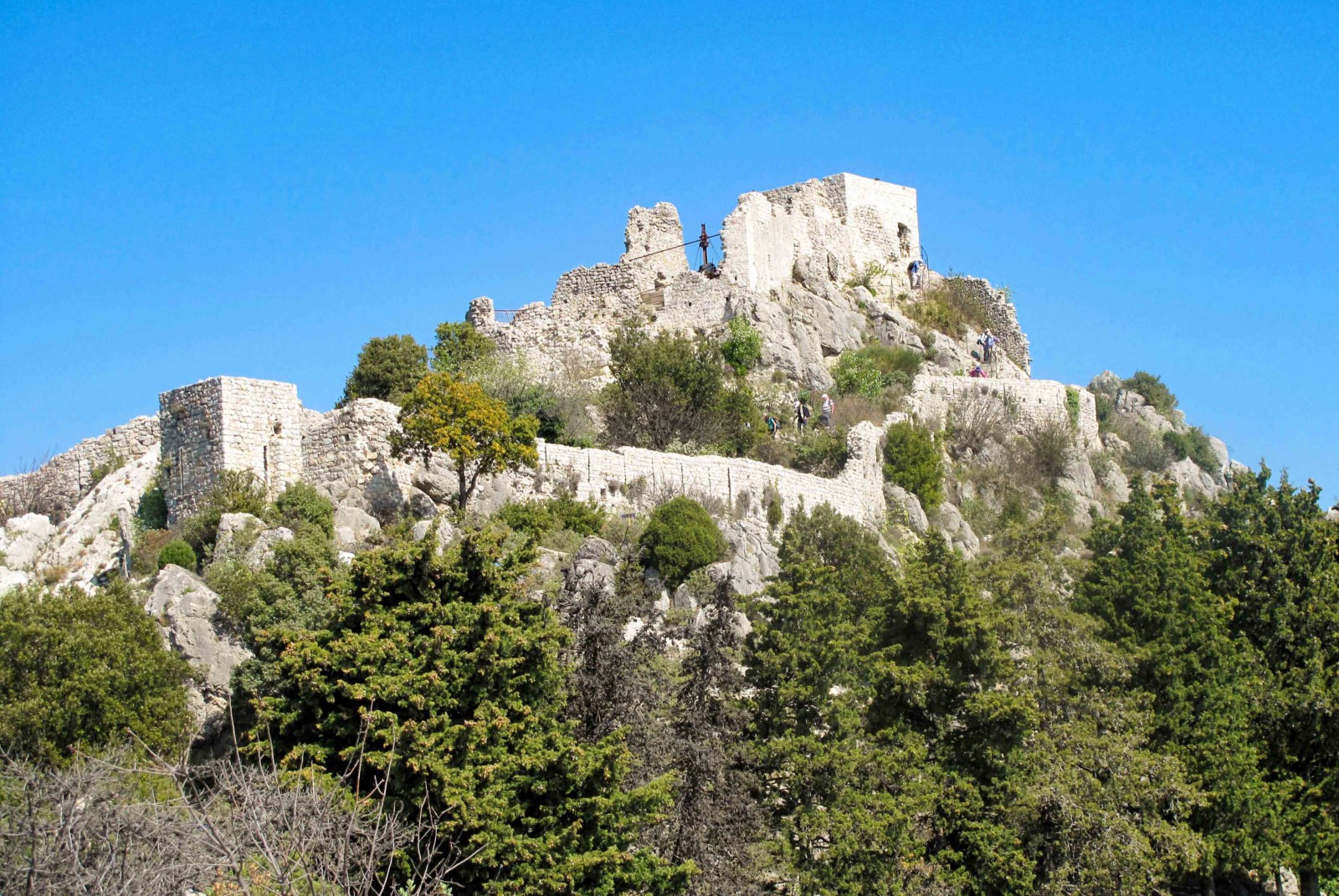
Atop a jagged peak above the village are the ruins of the feudal castle which once was a retreat from the Saracen invaders. The castle dates back to around 1180. However, its foundation could well be from the end of the 10th century.
The fortress was partially dismantled by the order of Louis XIV to put down the rebellion of the neighbouring village of Peille. The defensive interest of the castle was again used during the War of Austrian Succession from 1744 to 1749.
The medieval garden
At the base of the castle’s ramparts is a medieval garden laid out and maintained by the association “Peintres du Soleil” which offers a stunning panorama over the Mediterranean Sea.

The Maginot Line Fort
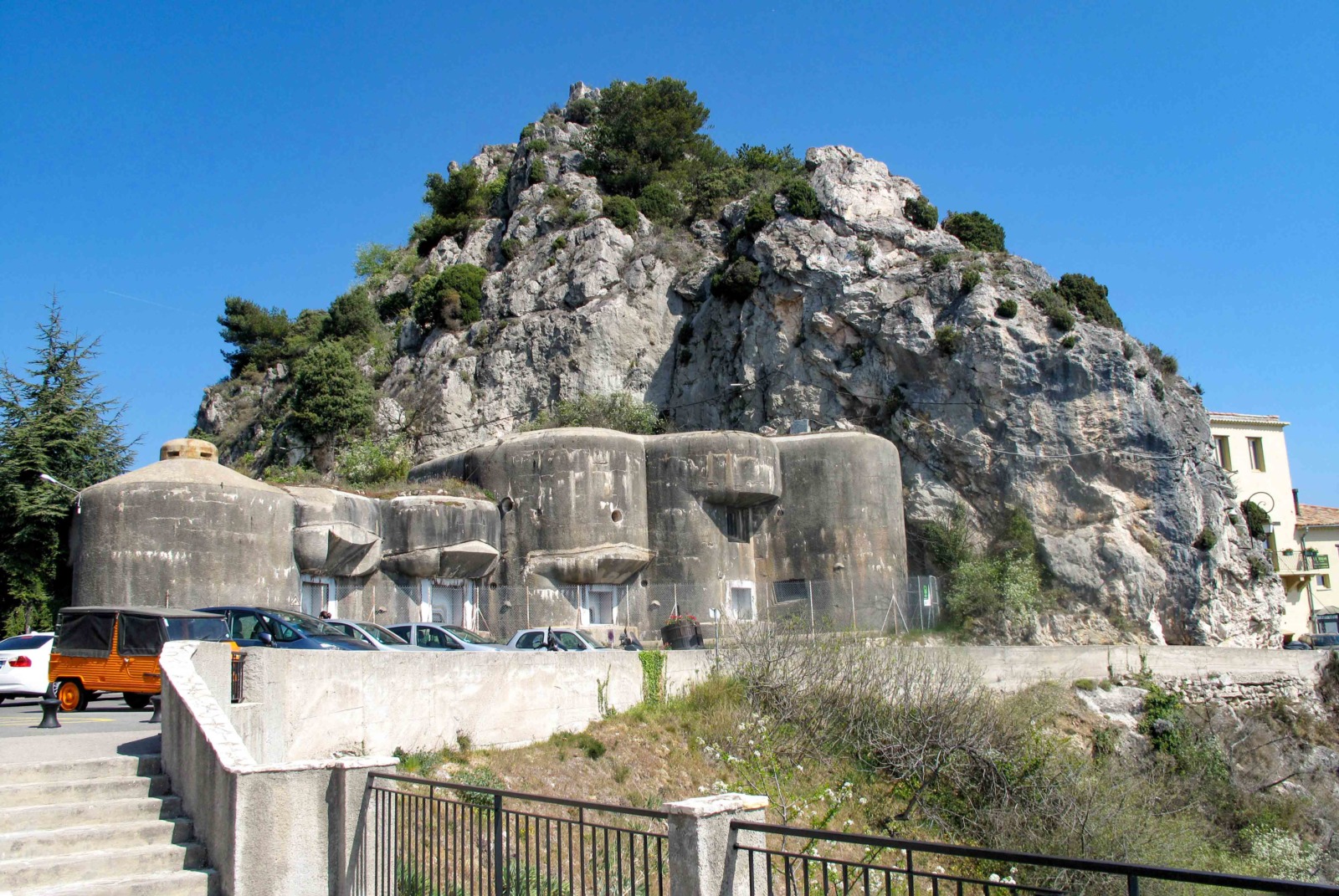
A fort built deep into the rock in the 1930s was the southernmost point of the Maginot Line’s Alpine extension. The French army built the concrete bunker (Ouvrage de Sainte-Agnès) to defend the Bay of Menton from a potential invasion coming from Italy.
It stands at an altitude of 780 metres above the Mediterranean Sea.
In 1940 it only served fifteen days but had enough firepower to defend itself against Italian fighters.
The fort is open to public visits in the summer.
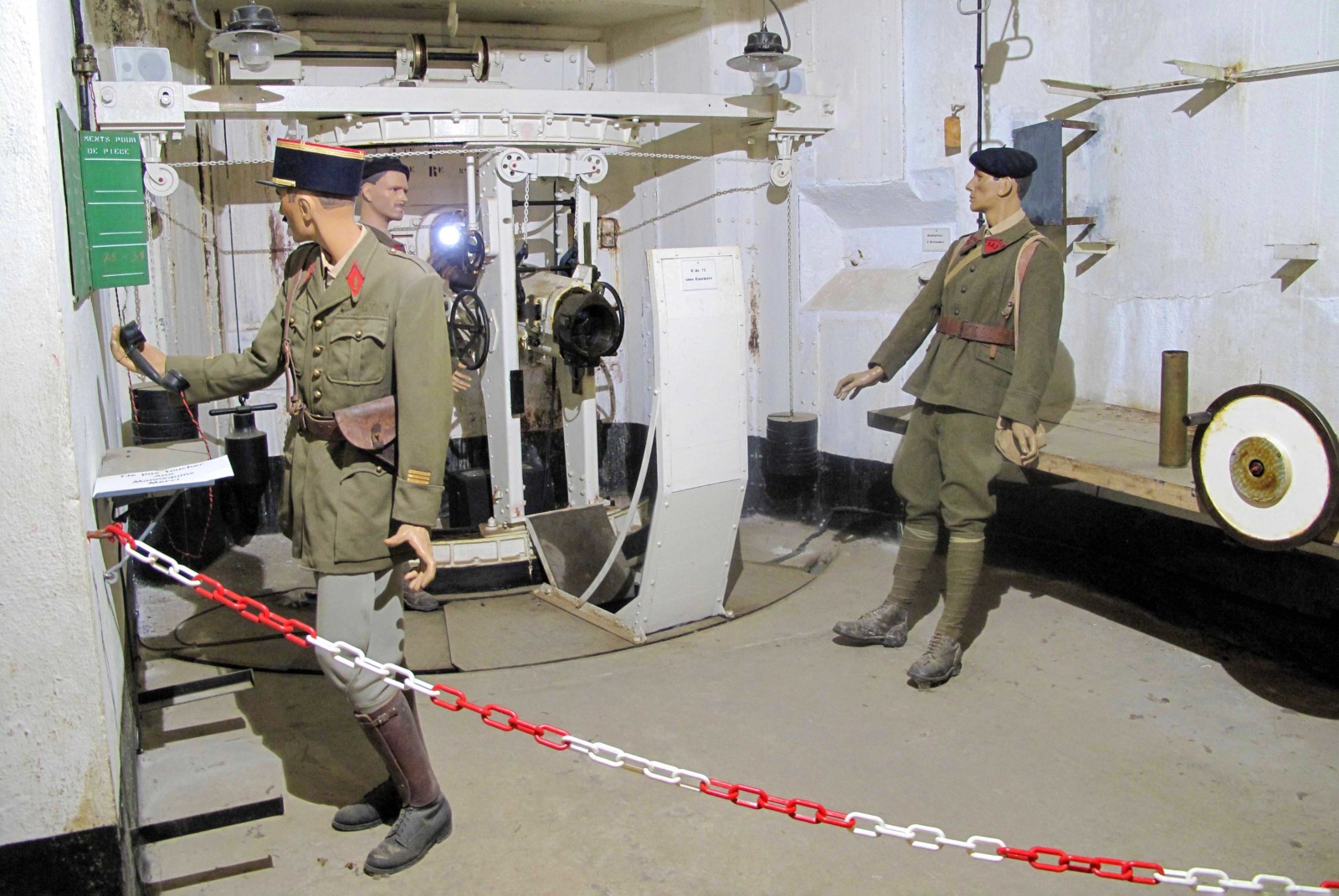
English-French Vocabulary
(f) for féminin, (m) for masculin, (adj) for adjective and (v) for verbs
- annexation = annexion (f)
- castle = château (m)
- count = comte (m)
- county = comté (m)
- feudal castle = château féodal (m)
- fort = fort (m)
- French Riviera = Côte d’Azur (f)
- House of Savoy = Maison de Savoie (f)
- Italy = Italie (f)
- Maginot Line = Ligne Maginot (f)
- Mediterranean Sea = Mer Méditerranée (f)
- mountain = montagne (f)
- panorama = panorama (m)
- perched village = village perché (m)
- Saracen = Sarrasin (m) / Sarrasine (f)
- viewpoint = point de vue (m)
- village = village (m)
Pin it for later

Find out more!
- Our discovery guide to the French Riviera
- Take part in the famous Lemon Festival
- Find out more about Menton, the Pearl of France
- The Wikipedia article on the Ouvrage Sainte-Agnès
- The Tourist Office Board of Provence-Alpes-Côte d’Azur
- Visit the official website of Menton’s Tourist Board
Have you been to Sainte-Agnès or Menton? If so, what did you like the most? Leave me a comment just below!
Featured image: © Patrick Rouzet – licence [CC BY-SA 3.0] from Wikimedia Commons



